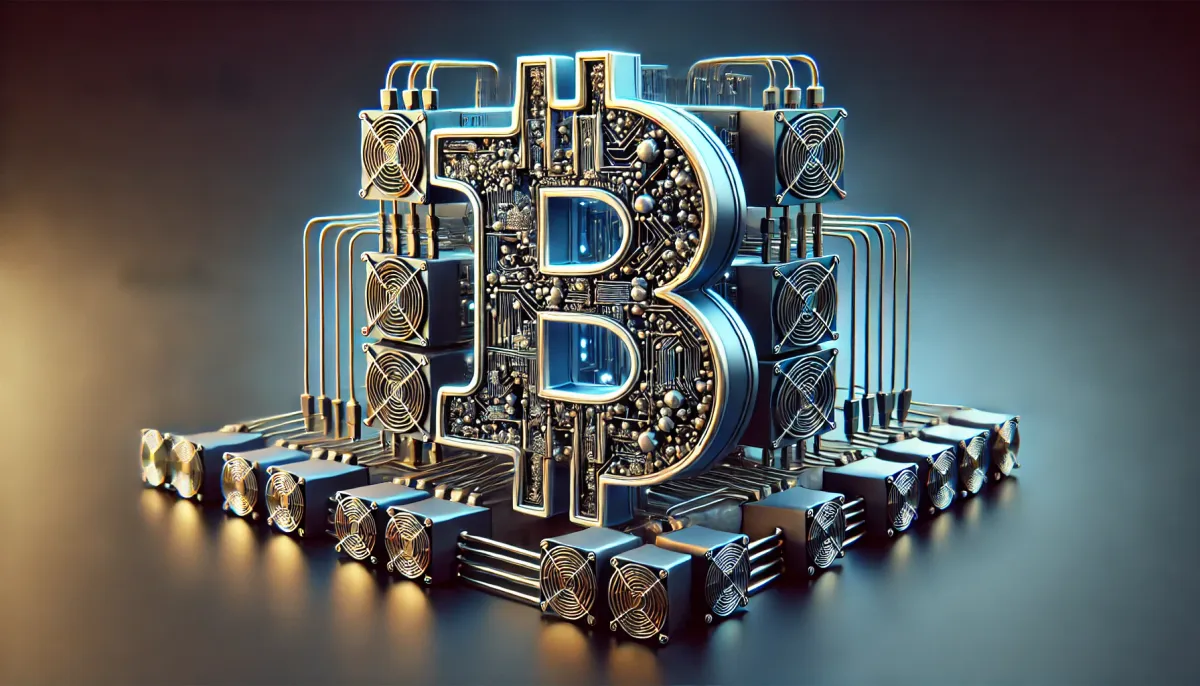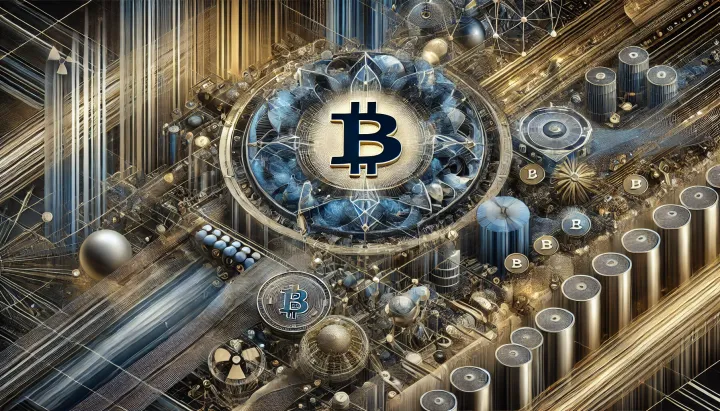RIOT Platforms’ Path to Efficiency and Market Resilience: Key Insights from Q3 Earnings
The November 4, 2024 episode of McNallie Money features Jason Les, CEO of RIOT Platforms, outlining RIOT's Q3 earnings report, highlighting the company's significant operational achievements in Bitcoin mining.

- My 'briefing notes' summarize the content of podcast episodes; they do not reflect my own views.
- They contain (1) a summary of podcast content, (2) potential information gaps, and (3) some speculative views on wider implications.
- Pay attention to broadcast dates (I often summarize older episodes)
- Some episodes I summarize may be sponsored: don't trust, verify, if the information you are looking for is to be used for decision-making.
Summary
The November 4, 2024 episode of McNallie Money features Jason Les outlining RIOT Platforms’ Q3 strategic operational achievements and forward-looking goals. With an emphasis on flexibility, sustainability, and controlled growth, RIOT is scaling its Bitcoin mining efficiency and exploring future revenue streams. This summary covers the broadcast’s highlights on power strategy, equipment upgrades, and RIOT’s market positioning, with insights valuable to investors and industry stakeholders.
Take-Home Messages
- Operational Efficiency Focus: RIOT is improving hash rate performance by optimizing equipment and expanding infrastructure, showcasing resilience in Bitcoin production.
- Power Strategy Innovation: RIOT’s mixed power procurement approach leverages both fixed-rate and market-rate options to hedge against price volatility.
- Environmental Sustainability: The company’s implementation of immersion cooling and water retention systems marks a strong commitment to eco-friendly practices.
- Stock-Based Incentive Structure: RIOT’s stock-based compensation aligns employee performance with long-term corporate growth, fostering sustained talent retention.
- Strategic Diversification Potential: RIOT’s power infrastructure offers potential to explore high-performance computing (HPC) hosting, while retaining a core focus on Bitcoin mining.
Overview
The November 4, 2024 episode of McNallie Money features Jason Les highlighting RIOT Platforms’ ongoing progress in Bitcoin mining efficiency and sustainability. The company reported a 23% increase in Bitcoin production, credited to optimized equipment and expanded infrastructure at Corsicana and Rockdale. Les explains that operational excellence is a primary goal, with upgrades in immersion cooling technology and MicroBT miners driving month-over-month improvements.
RIOT’s power management strategy balances fixed-rate and market-rate electricity purchases to control energy costs amid Texas’s fluctuating power rates. Corsicana’s reliance on market-rate power has been advantageous, enabling RIOT to benefit from low prices while keeping options open for future hedging.
The conversation also covers RIOT’s stock-based compensation model, which rewards employee loyalty and aligns workforce incentives with corporate goals. This approach, although dilutive in the short term, aims to cultivate a cohesive, growth-focused team. Additionally, the internal engineering division, ESS Metron, plays a critical role in cost-saving and supply chain stability, positioning RIOT with a strategic advantage in infrastructure management.
Looking forward, Les briefly mentions RIOT’s consideration of high-performance computing (HPC) hosting. Although Bitcoin mining remains RIOT’s priority, interest from potential HPC partners reflects the value of RIOT’s significant power capacity, providing optionality for future revenue diversification.
Stakeholder Perspectives
- Retail Investors: Concerned about potential stock dilution from stock-based compensation, as well as long-term stability amid power rate volatility.
- Environmental and Regulatory Bodies: Observing RIOT’s efforts in water conservation and immersion cooling as industry models for sustainability.
- Energy Market Analysts: Interested in RIOT’s hybrid approach to power procurement, particularly within Texas’s deregulated energy market.
- Bitcoin Mining Competitors: Monitoring RIOT’s operational upgrades and efficiency improvements as potential benchmarks for industry practices.
Implications
By focusing on energy-efficient and resilient mining operations, RIOT positions itself to better navigate price fluctuations and regulatory shifts in Texas’s energy market. This flexibility may offer long-term cost stability, particularly if current market-rate power trends persist. Additionally, RIOT’s approach to environmental sustainability aligns with growing regulatory and public scrutiny, potentially enhancing its corporate reputation.
For investors, RIOT’s stock-based compensation strategy—while potentially dilutive—signals a long-term commitment to aligning workforce goals with company growth. The possibility of HPC hosting provides a unique opportunity for diversified revenue, particularly if favorable partnerships materialize. While RIOT’s primary focus remains on Bitcoin mining, the expanding power infrastructure could serve as a flexible asset to capitalize on broader market trends.
Future Outlook
RIOT’s emphasis on flexible power procurement, operational efficiency, and sustainable practices reflects a proactive approach to managing mining costs and environmental impact. The company’s strategic investment in immersion cooling technology and efficient hardware deployment indicates an adaptable model that may set standards for mining resilience. With ongoing infrastructure expansion at Corsicana and Rockdale, RIOT aims to sustain growth into 2025 and beyond, reinforcing its competitive position in the Bitcoin mining sector.
Looking further, RIOT’s power capacity expansion supports a diversified future that includes potential HPC hosting options. By securing reputable partners, RIOT could leverage its large-scale power resources for long-term revenue stability. As market conditions and regulatory landscapes evolve, RIOT’s strategic adaptability positions it to navigate both Bitcoin’s cyclicality and emerging opportunities in computing services.
Information Gaps
- What methods can RIOT employ to stabilize electricity costs in the face of market-rate volatility? Given the volatility in Texas’s deregulated power market, RIOT needs effective hedging mechanisms to stabilize energy expenses. Addressing this would ensure predictable operating costs and support profitability.
- How could advances in Bitcoin mining hardware technology reduce the effects of competitive hash rate increases on profitability? As mining hardware continues to evolve, understanding how technology upgrades can buffer against competitive hash rate rises is crucial. This knowledge would inform RIOT’s long-term equipment strategy and operational efficiency.
- How does stock-based compensation impact retail investor confidence in RIOT’s long-term valuation? Retail investors are concerned with dilution risks associated with stock-based compensation. Clarifying the impact of this strategy on investor sentiment could provide insights for refining RIOT’s compensation approach.
- What additional sustainability practices could RIOT implement to enhance water conservation and energy efficiency at scale? Expanding water-saving initiatives at Corsicana could solidify RIOT’s commitment to eco-friendly mining. Identifying further sustainability practices would align with increasing environmental expectations from stakeholders.
- How might future regulatory changes in Texas’s energy market impact RIOT’s power cost structure? Texas’s energy regulations could shift, affecting RIOT’s current market-rate power model. Exploring regulatory risks would allow RIOT to plan for scenarios that impact its operational costs and sustainability.
Broader Implications
Bitcoin Mining Efficiency and Market Competitiveness
RIOT’s operational focus on efficient Bitcoin production through advanced hardware and immersion cooling reflects a broader trend in the industry to combat rising hash rate difficulty. As competition intensifies, other mining firms may also adopt cutting-edge technologies, pushing industry standards toward higher energy efficiency and sustainable practices. This movement can create a more resilient Bitcoin network by encouraging mining operators to invest in productivity-boosting innovations, enhancing network security.
Strategic Power Management and Operational Stability
RIOT’s hybrid power procurement strategy highlights the need for flexible energy models in Bitcoin mining, particularly in deregulated markets like Texas. By balancing fixed and market-rate contracts, mining companies can achieve cost stability and prepare for future regulatory or price shifts, fostering sustainable growth. This approach may serve as a model for other large-scale miners looking to secure long-term operational stability in volatile energy markets.
Environmental Sustainability in Bitcoin Mining
RIOT’s commitment to immersion cooling and sustainable water usage signals a growing emphasis on reducing Bitcoin mining’s environmental footprint. As public and regulatory scrutiny of energy-intensive industries rises, environmentally conscious mining practices could become essential for long-term operational licensing and community acceptance. This trend could drive a positive shift in Bitcoin’s public image, positioning it as compatible with broader environmental goals.
Expansion into High-Performance Computing (HPC)
RIOT’s consideration of HPC hosting exemplifies the mining industry’s exploration of diversification strategies to mitigate risks associated with Bitcoin’s price volatility. By tapping into the demand for HPC services, mining firms can leverage existing power and data infrastructure, creating alternative revenue streams. This potential shift toward diversified service offerings could mark a transformative period for mining companies, enabling them to adapt to changing market conditions.



Comments ()